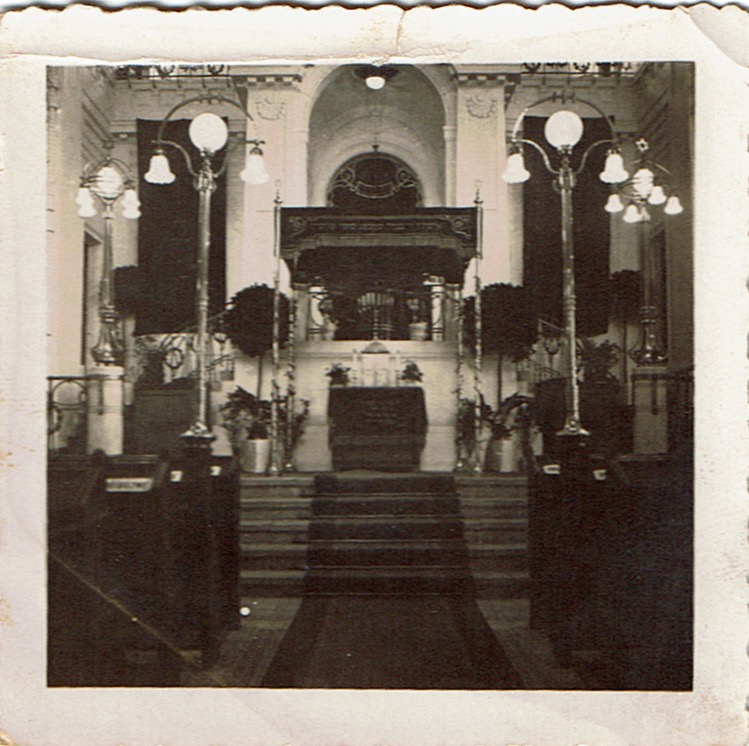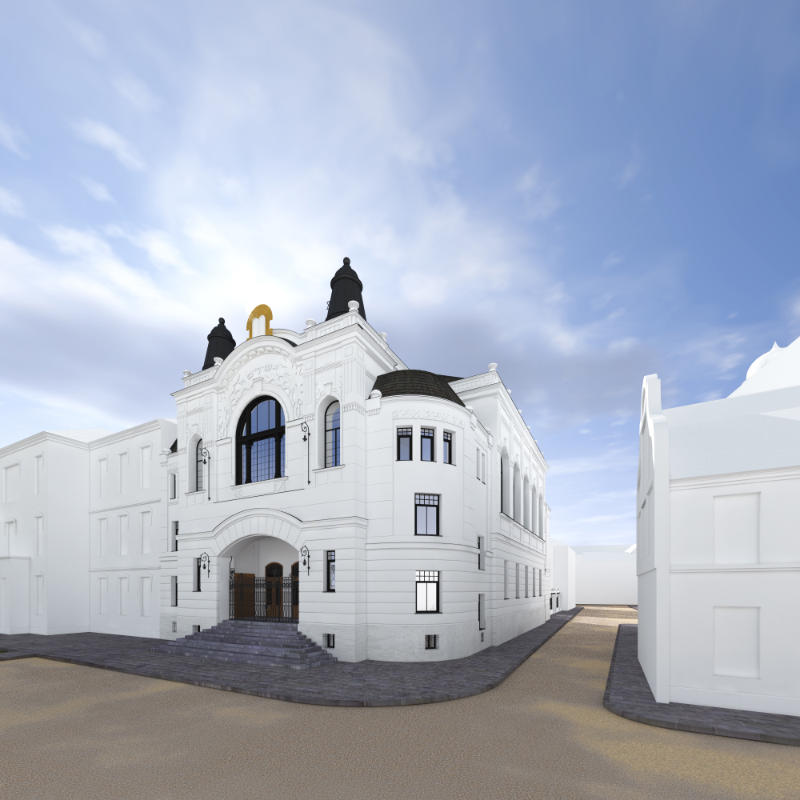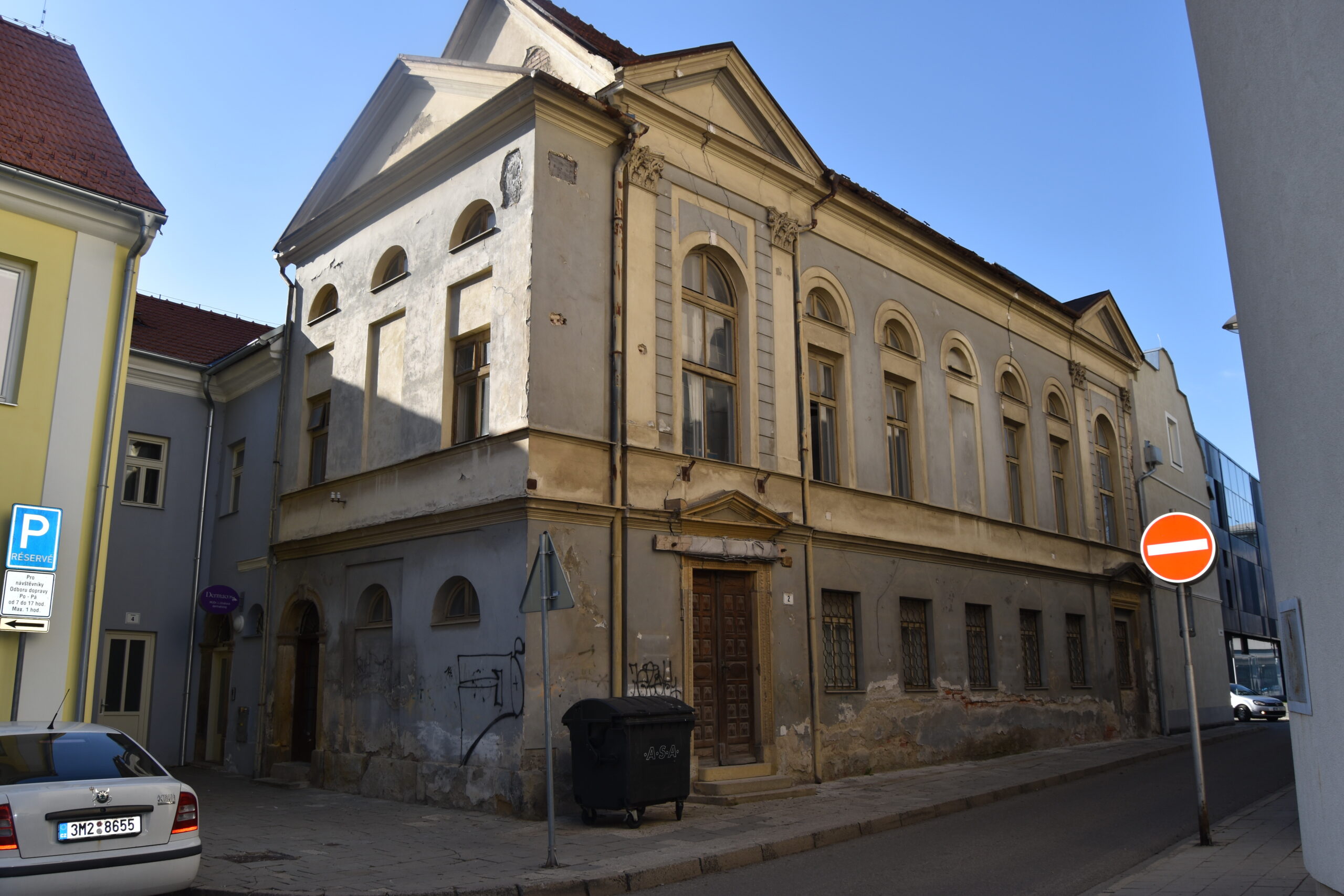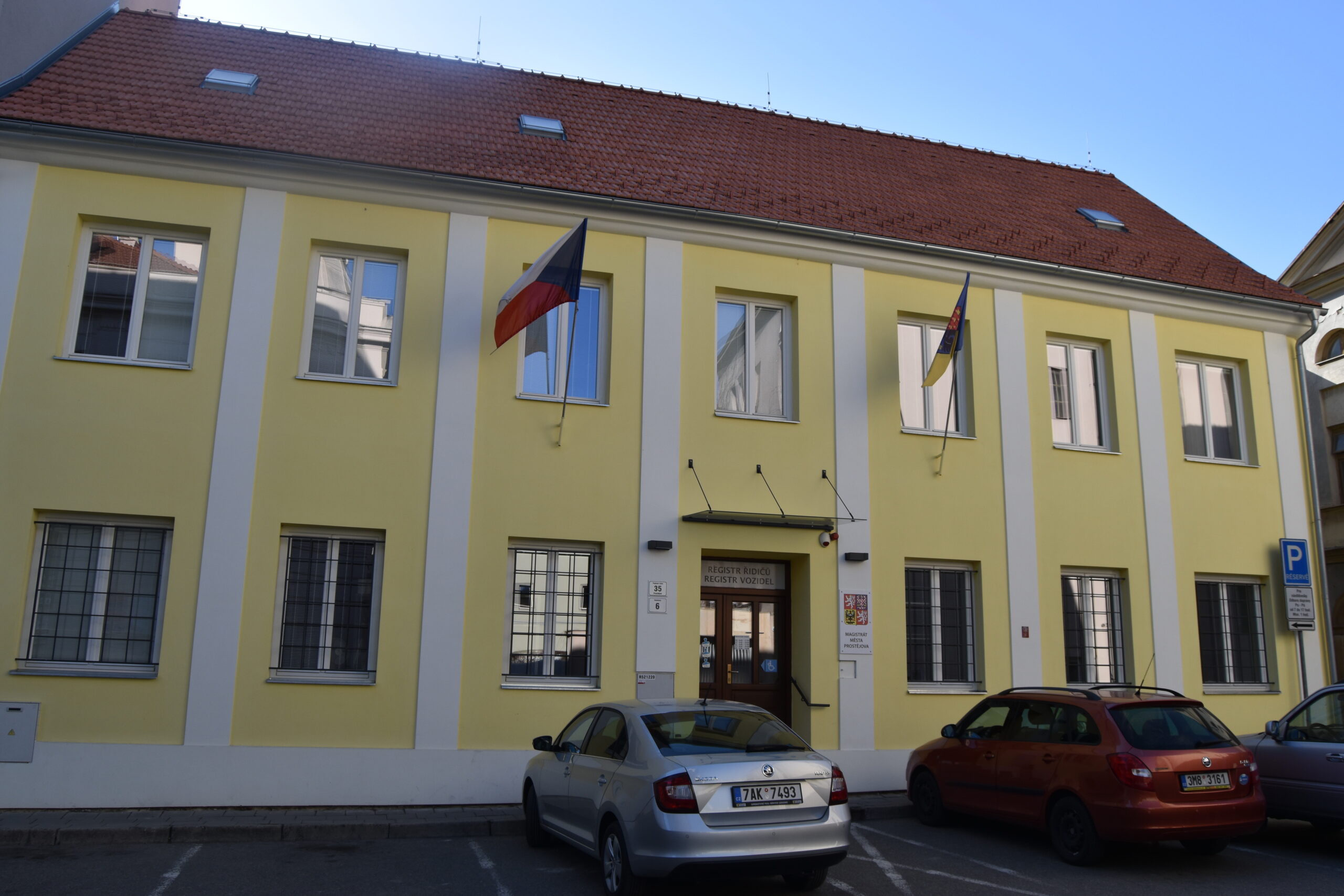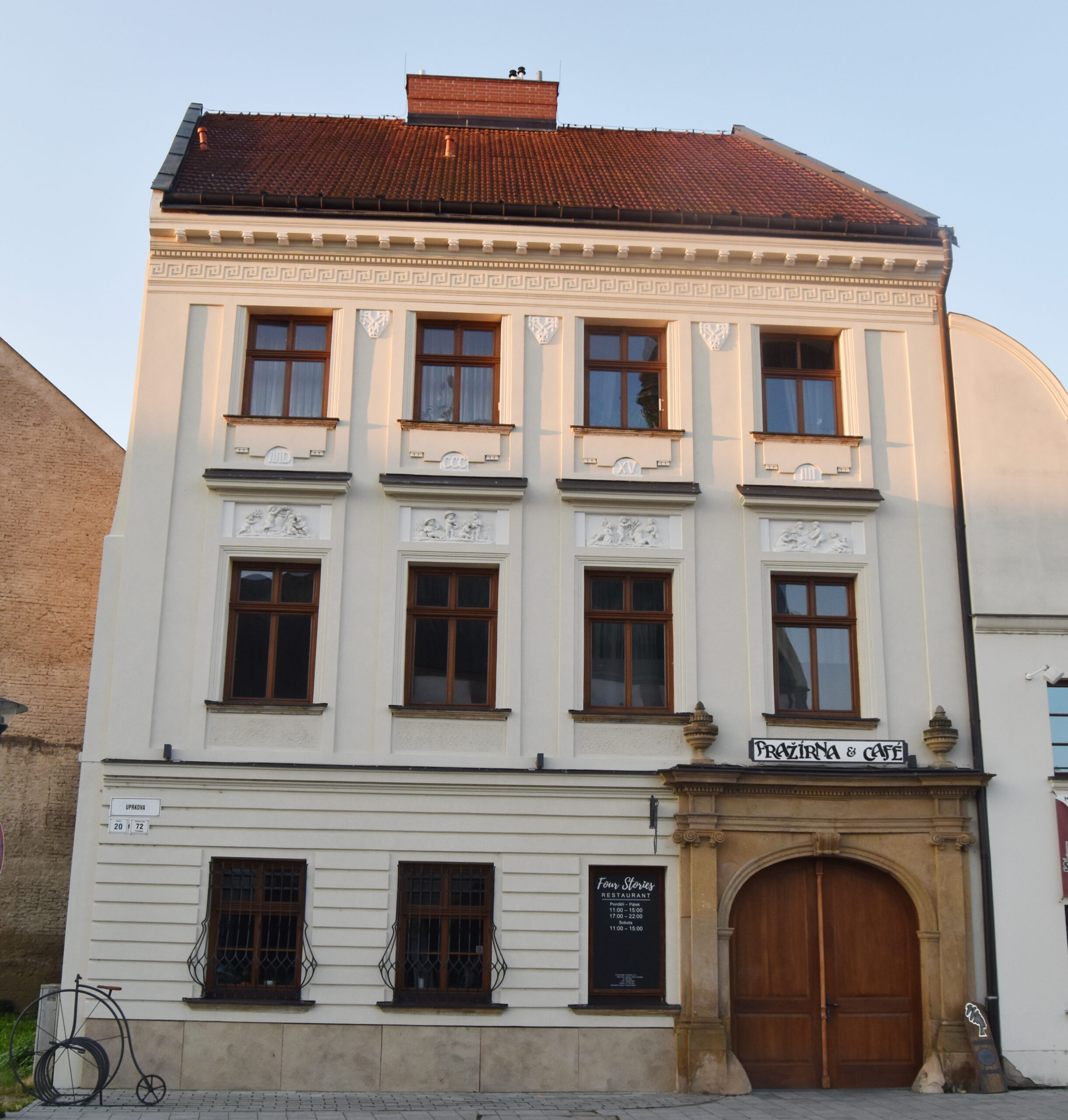
(Gallery below, scroll the page)
The first notes of Jews in Prostějov can be found in the town book from 1392. Jews began to come to Prostějov in larger numbers from the 15th century after the expulsion from the royal towns. They settled in Prostějov with the permission of Jiří z Kravař. They were mainly engaged in trade and crafts. The Jews of Prostějov had their own school since 1522 and a synagogue since 1540. In 1580, there were 39 Jewish houses within the walls of Prostějov. During the 17th century, the number of Jews was increased by immigrants from Poland, Vienna and also Silesia. The Jews came to completely dominate trade, and the animosity culminated in anti-Jewish riots in the 1670s. The significant development of the Jewish community took place in Prostějov in the 18th and especially the 19th century, when industry also developed, Jews were largely engaged in the clothing industry. The revolutionary year 1848 brought full civil rights for the Jewish population. A year later, an independent political Jewish community was established in and around Prostějov. Jews became involved in all areas of life. Prestige was gained, for example, by the Jewish gym club, later renamed the Makabi Prostějov sports club. In 1925, it had three sections – football, tennis and physical education. The activity of the Makabi Jewish Gymnasium and Sports Union was stopped in 1940. After World War II, the surviving former members tried to restore the club, but it never happened. Charitable organizations such as the Charitable Association of Jewish Ladies, the Local Group of Austro-Hungarian Traveling Merchants, the Cherwa Kadischa Jewish Association (burial brotherhood), etc., also functioned. The demise of the Jewish community in Prostějov was brought about by Nazi ideology. As part of the so-called final solution to the Jewish question, in 1942 over 1,200 (some sources state as many as 1,600) Jews were taken from Prostějov to Terezín and further to extermination camps in the east. About a hundred people returned home. Although the Jewish religious community was restored in 1945, since 1960 the community has become a synagogue congregation, and since 1966 it has been part of the Jewish Religious Community in Brno.
The Holocaust in Prostějov

During WWII Nazi despotism of the harshest form was exerted in Prostějov in dealing with the town’s Jewish community.
Prostějov was often referred to as the “Jerusalem of Haná”, as the town had an extraordinarily large Jewish community, all the more significant for its extensive economic power. A tragic paradox occurred here as most of the Jewish believers spoke German and had previously, at least partly, claimed German nationality, whereas the actual German population of the town was relatively small. In contrast, the Jewish town of Prostějov was one of the largest by Moravian standards. In 1930 the town had 740 inhabitants who claimed Jewish nationality, but 1442 who prescribed to the Jewish faith. It was the Jewish residents, irrespective of language or nationality, who became the victims of the most extensive, most extreme and most atrocious persecution by the Nazi regime, resulting in mass genocide.
On the basis of the racist “Nuremberg Laws” the Jews of the protectorate were relatively quickly forced into the position of not only being allegedly less important, but being an utterly contemptible and harmful element. Jews were immediately deprived of all powers to fulfil state and public functions and gradually also denied many important occupations such as those of advocate, doctor etc. Young Jews were expelled from all secondary schools, not to speak of universities, and from 1940 were even barred from primary schools. After the arianisation of the majority of property, Jews in Prostějov were subjected to registration and expulsion from all council houses and flats. As in other towns they were also deprived of radios, cameras, bicycles, jewellery, fur coats, etc. These restrictions were all topped by the order for compulsory wearing of yellow six-pointed Jewish stars bearing the word JUDE (Jew), which applied from 1st September 1941. Like other towns in the Protectorate, with the exception of Prague, the Jewish religious community was broken up and suppressed, Jewish services were forbidden along with other religious ceremonies. The synagogue in Prostějov was closed, although it was not subjected to the same desecration and destruction as the synagogue in Olomouc.
After the arianisation of property and the complete degradation of the human dignity of Jewish families, in 1942 the Nazi authorities embarked upon their worst atrocity with the deportation of all Jews from the protectorate, initially to the Terezín ghetto and subsequently to labour and extermination camps. In Prostějov this happened in the short space of 14 days in June and July 1942 when, along with other people from central Moravia, the Jewish townspeople were put into four rail transports from Olomouc to Terezín. From there, however, the majority of them were not taken to Auschwitz concentration camp, as was the case with other transports. Instead they were soon taken by train to Maly Trostinec and to the Belarusian town of Baranovici, where they were liquidated either by being gassed by specially adapted trucks driving by or being shot by members of SS units. According to one report 1600 Jewish people of Prostějov fell victim to Nazi genocide. The complete post-war list of Jewish victims of the holocaust in the Prostějov region, i.e. with a few exceptions all from the town of Prostějov itself, bears the names of 1227 people. It has to be stressed that, in this case, no Jew was spared the Nazi monstrosity. Only a few individuals managed to escape at the last moment and flee abroad.
School Street
A smaller part of the ghetto with 12 Jewish houses along the medieval walls was in Skolní Street, named after the Christian school that stood in its western part from the end of the 18th century until 1945. In Skolní Street, on the site of the houses standing close to the walls and demolished in 1973-1974, you can view paintings on the walls depicting part of the buildings of that time. Among the buildings on the opposite preserved side of the street, the only one belonged to Jewish owners.
Svatopluk Cech square
Behind the huge mass of the Zlata brana department store there are four former Jewish houses. House No. 5 used to have a Renaissance barrel vault and a Gothic cellar. In 2008, however, during the reconstruction, the entire interior of the house was demolished, the external appearance towards the street and probably the underground remained more or less preserved. Another building, No. 4, attracts attention with its double massive wooden entrance doors, originally leading to the residential part of the house and to the shop. According to the cellars, it is one of the oldest houses in Prostějov, the foundations probably already from the end of the 14th century, later rebuilt in the Renaissance and Classicist style. The neighboring yellow house No. 3 called U Antoníček never belonged to the Jews, although Koppel Deutsch tried to buy it at the beginning of the 19th century. Only the ban of the emperor himself made the sale of the building into Jewish hands impossible. Until May 2012, building No. 2 was decorated in the ground-floor windows with paintings from the Blue Angel studio, which were placed here in 2002 to revive this local corner. A similar decoration also graced the windows of the neighboring corner house No. 1. floor of this house was demolished in the spring of 2012, and the paintings were removed from the windows and the neighboring house. They then demolished the whole house and rebuilt it according to the original layout.
Demelova street
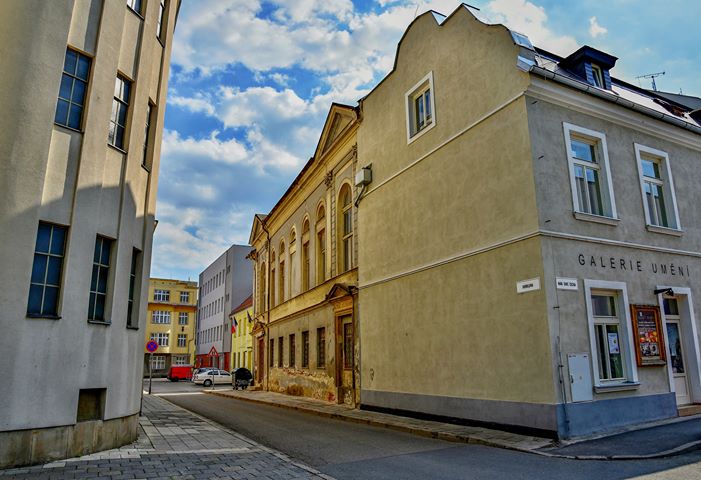
We reach the former larger part of the Jewish ghetto. At the beginning of the 19th century, this part included 44 residential houses, a synagogue, a foundation house serving teaching (school), a Jewish hospital and two buildings belonging to the Jewish community – one was a house of prayer and assembly (the old synagogue), the other combined an office, a school and a Jewish slaughterhouse (Jewish community).
The corner of the intersection with Demelova street on the south side is the former synagogue, a large building built in 1904 according to the design of the architect Jakob Gartner, originally in the art nouveau style. (It replaced a large baroque synagogue, which also occupied part of today’s small square and the passage to today’s Demelova Street.) After World War II, the Jewish community sold it to the Czechoslovak Hussite Church, which rebuilt it in 1947-1949 according to the design of the Olomouc architect Hubert Aust.
The opposite building in Demelova Street No. 2 with remnants of Empire decoration belonged to the Orthodox Church in the years 1951–2018, after which it was sold into private hands. Originally the study hall of the Jewish Talmud school (yeshiva), probably rebuilt in the 1830s to its current form, it served as a community center and also as a temple for Orthodox Jews.
Right in the corner is the entrance to Demel’s house No. 4, which, however, is completely hidden among the other buildings and only this entrance is visible to the viewer.
House No. 6 was built in 1814 and originally served as Veith Ehrenstamm’s foundation house. He provided free education to poor Jewish children. Today it serves as the transport department of Prostejov Municipality.
The opposite spacious house, Demelova No. 3, was built by the Jewish community as a Jewish school in 1904.
After the Second World War, a doctor’s office operated here for a short time, the gymnasium was used by some of the local schools, and finally the entire house was rebuilt into a kindergarten. At present, the building belongs to the Czechoslovak Hussite Church.
Krizkovského street
Originally, only today’s houses No. 12 and 14 belonged to the ghetto, but both were completely rebuilt. In front of building No. 12 there are 5 stones that disappeared for the Brenner family (the first Stolpersteine in Prostějov – placed by the Hanacky Jerusalem association in 2019).
On the facade of the Financial Office building there is a commemorative plaque of the philosopher Edmund Husserl – opposite was the birthplace of this famous philosopher.
Spalicek

Corner building No. 12 dates back to 1839. Due to the decoration of its facade, it is often cited as an example of rural Biedermeier, which is unique in Prostějov. Originally, the ground-floor house (today the Vackar bicycle shop no. 16) probably dates back to the Baroque period. They added a floor in 1899, but the building fell into disrepair for such a long time after the Second World War that the current owners were forced to basically preserve only the ground floor, the superstructure is modern. The house belonged to Katerina Bobaschova (1854–1942), who ran a pub here with her daughter Eliska (1889–1942).
The oldest of this block is building No. 18, which served as the communal house of the Jewish community. A historical survey here has uniquely identified Renaissance elements, but the majority of the building is Baroque and Classicist, built only after the town fire in 1697. In the back part, once marked Hradebni street No. 23, there used to be a Jewish slaughterhouse on the ground floor, and above them on the first floor from the end of the 18th century Jewish school. In the 1930s, the apartment in Hradebni Street was occupied by the large family of Rabbi Ludvik Schap. After the war, the house, like all others in this part of the city, fell into disrepair for many years, until it was acquired by the Museum Prostejov in 1994.
Apart from the synagogue, the largest and perhaps the most beautiful preserved monument of the former Jewish ghetto is the classicist house No. 20 in Uprkova Street, called Ehrenstamm’s. It was the Jewish manufacturer and entrepreneur Veith Ehrenstamm (1763–1827) who had the vast building built in 1817–1819. The house is in private hands. There is a restaurant in There is a cafe in the courtyard. Practically the entire lower floor is accessible to the public and can be viewed.
Sadky Street, house No. 2 served since its opening in 1869 as an almshouse and infirmary of the Dr. Foundation. Gideon Brecher. After the Second World War, when the Jewish community, which had thinned out in numbers, sold both synagogues, the synagogue congregation met here until about 1973. In 1981, the building was sold to the Christian congregations, now it is privately owned.
Studentska street – Old Jewish cemetery

In Studentská Street there is an old Jewish cemetery, the surface of which was, however, devastated during the war. Since 2001, the cemetery has been commemorated by a monument in the form of two tombstones, the work of Ing. architect Blahoslav Adamík. Since 2019, the area of the cultural monument has housed a replica of the gravestone of the prominent Rabbi Tzvi Yehoshua Horowitz. From May 2020, there is an information totem with photos of the cemetery before the devastation on the side of Lidická Street (near the former entrance to the cemetery).
Brnenska street – New Jewish cemetery

The new Jewish cemetery (the third in the order, the second is in Studentská street) is located in Prostějov on Brněnská street next to the city cemetery.
If you do not choose the Shabbat period for the day of your trip, i.e. from sunset on Friday to sunset on Saturday, or one of the Jewish holidays, when one of the last original monuments to the once large Jewish population of Prostějov leaves its gates closed to visitors, walk through Brněnská street to the end, on the left. Here, the Jewish cemetery adjoins the city cemetery and extends beyond the neo-baroque gate. The cemetery serves its purpose from April 1908 until today.
A brick wall surrounds the cemetery on two outer sides, and it adjoins the city’s non-denominational cemetery on the two inner sides.
Unfortunately, the entrance gate and Ceremonial Hall from 1908 lost their original Art Nouveau character during later repairs. On a stone slab above its entrance is a Hebrew inscription: „Built in the year 668 of a small number“ (i.e. 1908). However, both the interior of the ceremonial hall with Hebrew prayer texts on the walls, as well as its interior equipment – the catafalque, candlesticks, coffins, lectern – were preserved.
Since 1950, memorial plaques with the names of 39 Jewish dead from the First World War and 1,227 victims of racial persecution from the Nazi occupation of 1939–1945 have hung on the north wall of the hall, but this number is inaccurate and probably no longer traceable. In addition to 552 graves and tombstones, the cemetery also contains a memorial to those who died in the First World War, which was also dedicated to the victims of the Shoah at a commemoration ceremony in October 1950. In the southwest corner of the cemetery stands the one-story house of the cemetery administrator with a carriage house for the hearse. Among the gravestones, some are richly decorated, for example in the art nouveau style, but mostly they are of a modern type. Granite, marble, sandstone and artificial stone were used as materials. The decoration of the gravestones is austere, symbolism related to the name, family, characteristics or occupation of the deceased is represented exceptionally. The inscriptions are in German, Czech or Hebrew.
Gallery




